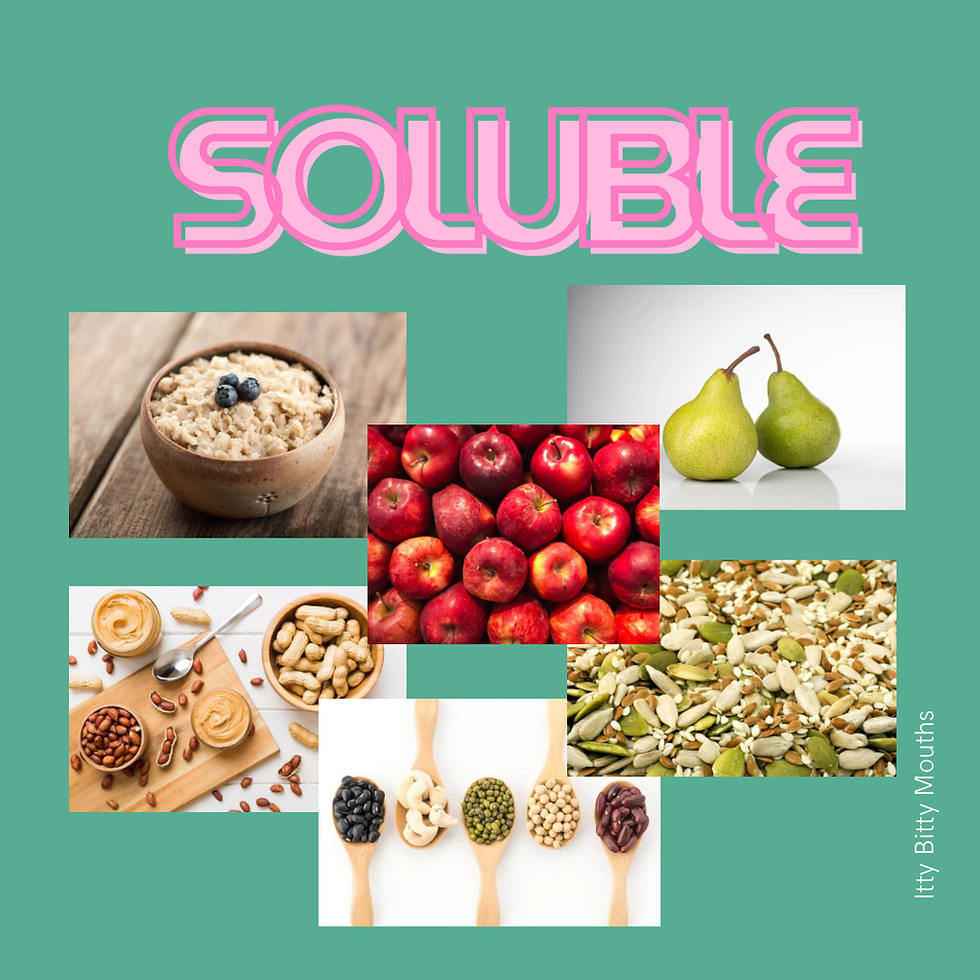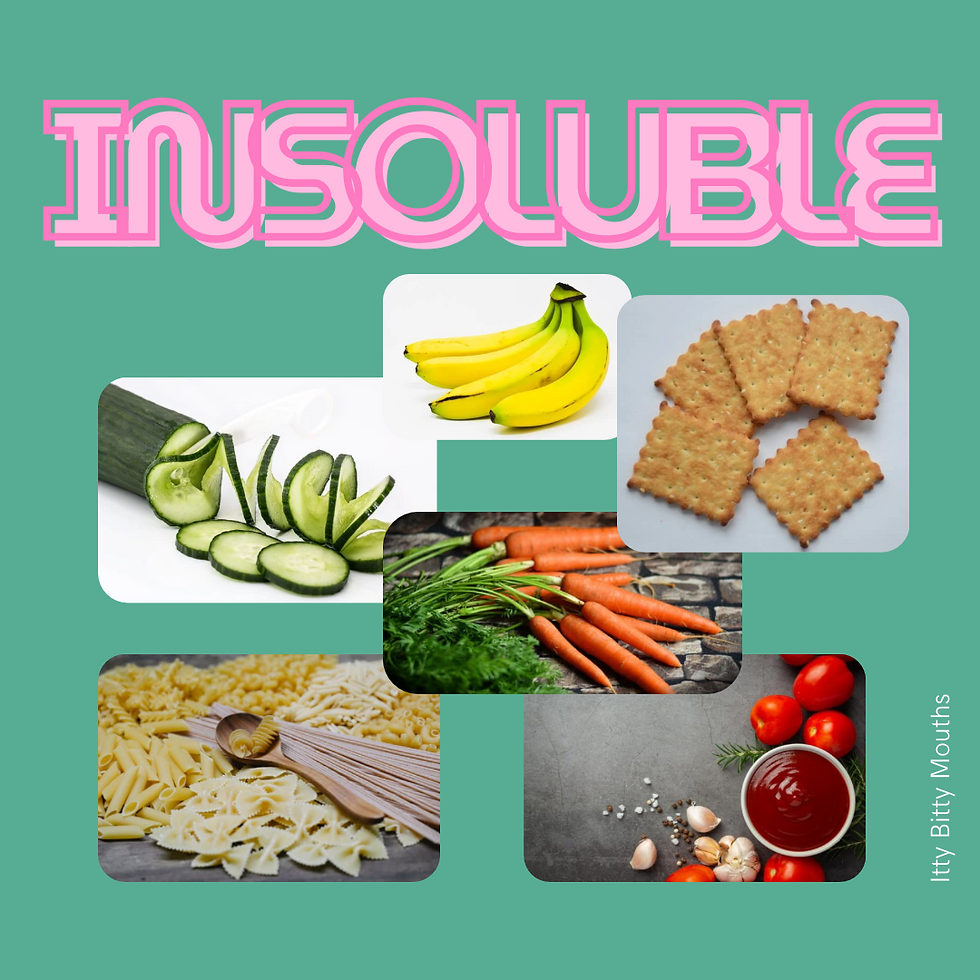Fiber-Rich Foods for Children With PFD
- Dr. Amanda Graves

- Jan 21
- 1 min read
The advantages of fiber encompass the following:
Promoting gastrointestinal tract health
Adding bulk to the stool to facilitate bowel movements
Assisting in maintaining stable blood sugar levels
Enhancing the sensation of fullness
Foods Rich in Soluble Fiber for Children with PFD or Dysphagia

Oatmeal: When processed into a powder, oatmeal can be added to foods to enhance thickness or provide a consistent texture, serving as an excellent alternative to infant oats or rice cereal.
Apples and Pears: These fruits can be cooked with the skin on and blended into a chunky puree. While consuming them whole and uncooked is ideal for fiber intake, a partially processed form still offers benefits.
Seeds and Nut Butter: These can be effectively used as spreads on toast or as dips for preferred foods.
Beans: Varieties such as pinto beans, refried beans, kidney beans, and others can serve as excellent finger foods for children who are motivated to feed themselves.
Foods that are rich in insoluble fiber may include the following:

Banana: Sliced for finger feeding, mashed with a fork for a puree, or blended into a smoothie, bananas can add a delightful touch of sweetness.
Carrots and Cucumbers: When cooked and mashed, these vegetables create a simple puree that can be enjoyed on its own.
Tomato: Cooked and pureed, tomatoes serve as a fiber-rich option that can be used as a tasty dip for chicken nuggets and veggie straws or as a sauce over pasta.
Whole Grains: Crackers and pasta are often preferred by children with sensory feeding issues; transitioning to whole-grain versions can enhance fiber intake with minimal disruption.







Comments